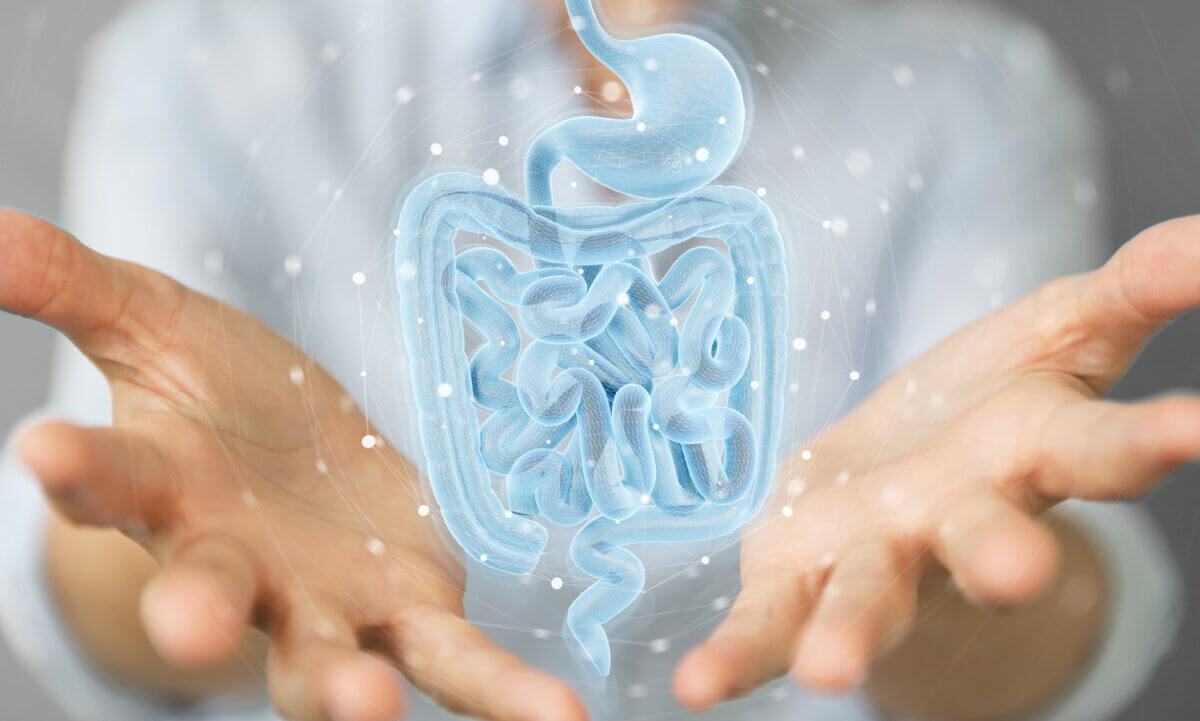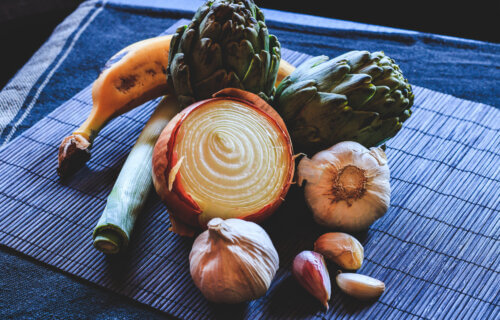SAN JOSE, Calif. — Prebiotics are a particular type of carbohydrate often found in plants that the human body can’t digest. So, when people eat foods packed with prebiotics, they linger in the lower digestive tract, where they help stimulate and nourish beneficial bacteria in the gut. Now, researchers in California have examined the prebiotic content of thousands of foods — boiling them down to a top five list of prebiotic-rich options.
The study finds eating more of these foods will benefit your gut microbiome:
Besides supporting gut microbes, prebiotic-rich foods contain high amounts of fiber — a critical nutrient many Americans’ diets neglect.
“Eating prebiotic dense foods has been indicated by previous research to benefit health,” says Cassandra Boyd, a master’s student at San José State University who conducted the research with Assistant Professor John Gieng, PhD, in a media release. “Eating in a way to promote microbiome wellness while eating more fiber may be more attainable and accessible than you think.”

Put another way, prebiotics can be considered “food” for the microbiome. It’s also important not to confuse prebiotics with probiotics, which contain live microorganisms. While both potentially benefit microbiome health, they work in different ways.
Prior studies have linked higher prebiotic intake with improved blood glucose regulation, better absorption of minerals like calcium, and additional markers of both improved digestive and immune function. While most current dietary guidelines fail to specify a recommended daily allowance for prebiotics, the International Scientific Association for Probiotics and Prebiotics — a non-profit scientific organization responsible for the currently held definition of prebiotics — recommends a daily intake of five grams.
For this latest research, study authors used previously published scientific findings to analyze the prebiotic content of 8,690 foods found in the Food and Nutrient Database for Dietary Studies, a resource used by countless scientists to study nutrition and health.
Roughly 37 percent of the foods were found to contain probiotics. Dandelion greens, Jerusalem artichoke, garlic, leeks, and onions showed the greatest amounts, ranging from 100 to 240 milligrams of prebiotics per gram of food (mg/g). Additional foods identified as being prebiotic rich were onion rings, creamed onions, cowpeas, asparagus, and Kellogg’s All-Bran cereal, with each containing around 50 to 60 mg/g.
“The findings from our preliminary literature review suggest that onions and related foods contain multiple forms of prebiotics, leading to a larger total prebiotic content,” Boyd concludes. “Multiple forms of onions and related foods appear in a variety of dishes as both flavoring and main ingredients. These foods are commonly consumed by Americans and thus would be a feasible target for people to increase their prebiotic consumption.”
According to the study’s findings, Boyd estimates a person would have to eat approximately half of a small (4-ounce) onion to obtain five grams of prebiotics. Wheat-containing items, meanwhile, ranked lower on the list. Foods with little to no prebiotic content included dairy products, eggs, oils, and meats.
Moving forward, study authors hope this work will help other researchers analyze the health impacts of prebiotics and inform future dietary guidelines. They stress further studies are needed to better understand how cooking impacts prebiotic content, as well as to better assess foods containing multiple ingredients.
The team presented their findings at NUTRITION 2023, the annual meeting of the American Society for Nutrition.
You might also be interested in:
- Prebiotics, Probiotics, Postbiotics: What Are They And Why Do We Need Them?
- Food additive in many processed foods alters gut health, may cause disease
- Meditation can alter human microbiome, improve gut health


Loved the article, and agree that we all need more prebiotics, but unfortunately your picture for the article shows globe artichokes which are definitely prettier then jerusalem artichokes, which are a tuberous root of a member of the sunflower family also known as sunchokes, or in our house fartichokes!
Another lazy “research” paper.
Instead of actually doing any research, instead of designing and running experiments, it is much easier (and cheaper) to let Google do the research for papers and then just pretend that your ‘findings’ are actual science.
“For this latest research, study authors used previously published scientific findings ”
‘ …, Dr. John Ioannidis had good reason to expect that he might become a noted and respected researcher when he first entered the field of medical research. What he did not expect was that he would become known for challenging and exposing the bad science of his peers and finding that up to 80 percent of medical studies results are either wrong or fraudulent.’
‘ To steal ideas from one person is plagiarism. To steal from many is research.’
“The case against science is straightforward: much of the scientific literature, perhaps half, may simply be untrue. Afflicted by studies with small sample sizes, tiny effects, invalid exploratory analyses, and flagrant conflicts of interest, together with an obsession for pursuing fashionable trends of dubious importance, science has taken a turn towards darkness. ”
Richard Horton richard.h [email protected]
Some of those foods contain inulin, which is slightly sweet, and is a great sugar substitute if you buy it in a powdered supplement. Dandelions also contain zeaxanthin and lutein, which are great for the eyes.
After I found out how healthy dandelions are, I tried eating one, and was amazed at how sweet the flower top was. Dandelions are one of the healthiest “weeds” you can eat